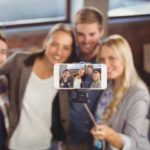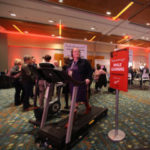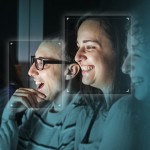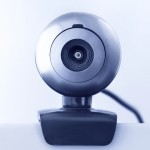 In our December issue we explored the latest advances in wearable technology. Dahlia El Gazzar, CEO and founder of The Meeting Pool, shares how she’s seen wearables in action at events and predicts what come into play in the near future.
In our December issue we explored the latest advances in wearable technology. Dahlia El Gazzar, CEO and founder of The Meeting Pool, shares how she’s seen wearables in action at events and predicts what come into play in the near future.
1. What’s the coolest implementation of wearable tech that you’ve seen done at a meeting or event?
Here are two implementations that I think are telling and very cool!
One example: There are a couple of very innovative attendee engagement solutions out there such as www.sli.do.com, www.evenium.com, www.lintelus.com, to name a few, have successfully created apps for speakers to use Google Glass to monitor audience questions and polling results, definitely bringing another angle to second-screen sharing. So speakers can now utlize Google Glass as a teleprompter to help them with notes on their presentations through the glass lens. For example, a speaker will now be able to see through Google Glass how many people are engaged at the specific slide they are speaking on as questions will pop up, prioritizing the ones that have been voted up.
Another example: Event Farm, an innovative event activations company that definitely knows how to created mindbending, personal event experiences for brands and attendees.
Another type of wearable technology you see so much of right now is NFC-enabled wristbands. At events those act like ID bracelets that show your profile, your likes, and your dislikes. At a recent event, before I even got to the bar for a search of my favorite drink, I was notified that my cocktail was waiting for me!
2. Are there any misconceptions planners have about what wearables can and can’t do?
Yes there are. Not all wearable technologies are 100 percent functional right now in my opinion. And there’s so many factors involved with deployment, resources, and it all depends on the strategy and the goals in place — that is the primary step. This is where I recommend that before an event or brand decides to utilize wearables at their events, they need to have a strategy and lean very heavily on their potential tech partners as well as the venue to make sure that all will work smoothly. They need ask about Bluetooth, Wi-Fi bandwidth, and a potential back-up plan. It sounds so basic, but you will be surprised where some of the basic questions are sometimes not asked.
3. What do you see as the next big breakthrough in wearables?
This is the exciting part — gadgets such as Google Glass, watches and bracelets, and even clothing will continue to wow us, and hopefully events will push their own envelope to utilize them within their own event design. The breakthrough is about how content will be shared and how that will impact the personal event experience.
Wearables will continue to help event planners have their attendees capture event content and turn that into event branding, event marketing and sharing their own experiences with their own tribes, and potential attendees. It’s going to be all about sharing those interactions that are happening at the event level, whether peer to peer, or with speakers, exhibitors, and sponsors. And it’s all measured and tracked. It’s a huge upside for the event planner to identify their brand ambassadors, encourage them to do more of that, and reward them.
4. How should a novice planner look into using wearables at a major meeting or trade show?
Try it, play with it. Test it and perfect and customize it for their own event. Don’t shy away from it.
We have a great opportunity to look outside of our own industry to see how other brands or other industries such as fashion, retail, for example are utilizing wearables.
So imagine that someone at your next show is wearing clothing that charges cell phones — a walking charging station! Wow!
Imagine you get a couple of Google Glass sets and give them to a couple of brand ambassadors to capture content and share it through social media and share their experience that way? That would make a difference, right?
Augmented reality? That is going to be an amazing technology that will flow through wearables, and it — again — goes back to creating those personal event experiences. So imagine I’m walking on a show floor, and through Google Glass, I will be able to “view” content for the exhibitors that I’m interested in, all based on my profile and my interests, and can be “led” to them for a great conversation about their products and services?
5. How did you yourself become interested in wearable tech?
I love gadgets, love my google glass, and love the fact that wearable tech will deliver that personalized event experience. I’m all about mindbending event experiences.



